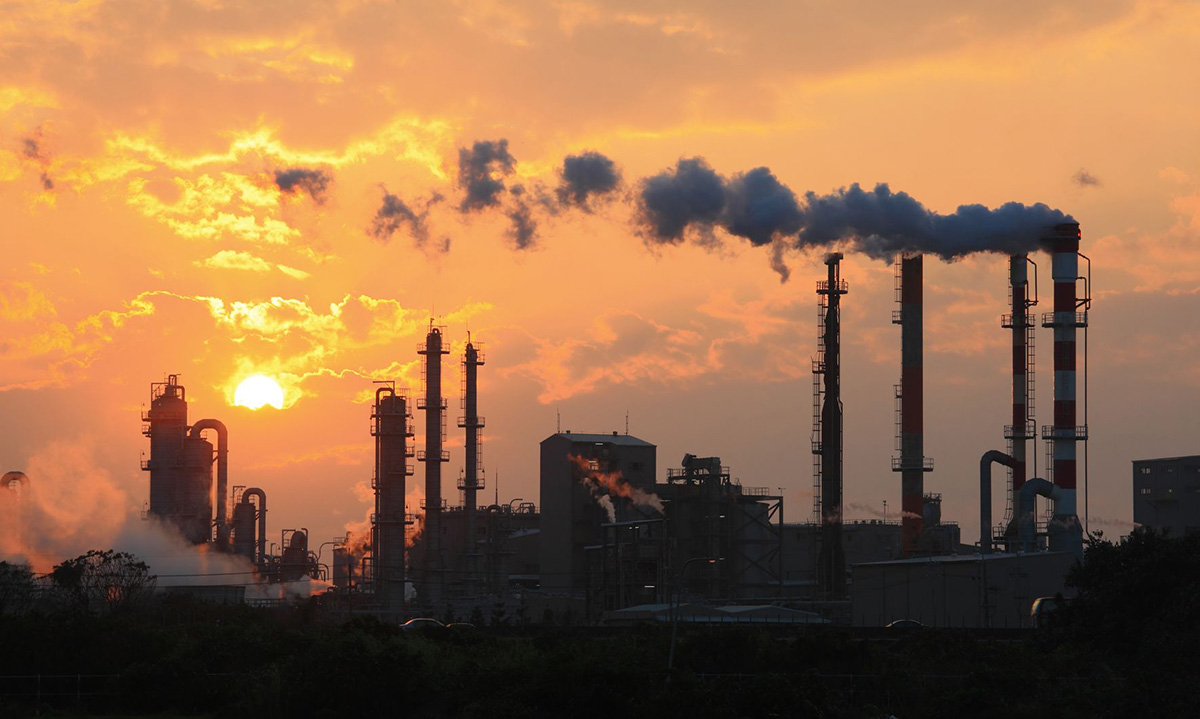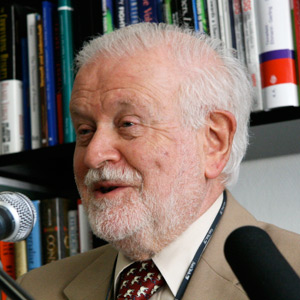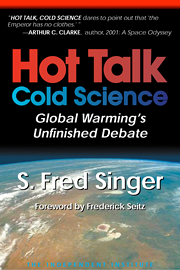The Paris Accord (PA) on global warming, concluded in December 2015, had been viewed as an enhancement of the 1997 Kyoto Protocol (KP). But only some weeks later, the Supreme Court of the US (SCOTUS) effectively “killed” EPA’s “Clean Power Plan (CPP),” the centerpiece of the US commitment to the PA.
The CPP’s carbon regulation had been challenged by 27 states and an array of utilities, coal producers and business groups. A SCOTUS’ February 9 “stay” overturned a DC Court of Appeals panel’s decision to allow the EPA plan to go forward. Although the appeals panel had not stayed CPP, it had established an expedited hearing schedule for the case, which is scheduled to begin on June 2. After the plaintiffs lost their case in the Court of Appeals, they petitioned SCOTUS to issue a “stay,” citing the danger of “irreparable harm.”
Will this now lead to the unraveling of the PA?
The PA may survive after all: If the Appeals Court again upholds EPA, and SCOTUS votes 4-4 (after Justice Scalia’s untimely death), then CPP may proceed. It all depends on the outcome of the November elections. Conversely, however, the fight about CPP, involving 27 states, may affect the outcome of the election. The next few months should prove quite interesting.
The PA is mainly about money transfers, designed to provide a legacy for president Obama. Unlike the KP, the PA has little to do with climate. Although it talks bravely about keeping global warming below 2degC, it never explains how to define and measure this (alleged) “critical” threshold.I recently referred to it as a big "nothing-burger"—borrowing a term used by the late Anne Gorsuch, EPA chief under president Reagan.
Legal status—not a treaty?
As compared with Kyoto, the PA includes both industrialized and developing nations, but its legal status is not well defined: Some nations have considered it a protocol to the (Rio de Janeiro) Global Climate Treaty, the 1992 Framework Convention on Climate Change (FCCC), and have ratified it as an international treaty. On the other hand, the White House (WH) does not label it a formal treaty and has not submitted it to the US Senate for ratification, fearing it will turn the PA down. [Even after nearly 20 years, everyone still remembers the unanimous Senate vote for the Byrd-Hagel Resolution (of July 1997) against such a treaty.] Instead, the WH planned to meet US commitments though Executive Orders and by relying on its own interpretations of relevant laws—mainly the Clean Air Act (CAA) and its Amendments.
Its centerpiece is EPA’s highly controversial “Clean Power Plan” (CPP), which targets existing coal-burning power plants; in a surprise decision, the Supreme Court just granted a “stay” until after the CPP matter has been litigated. Unlike most other nations, the US has committed to strict emission reductions by 2030: 32%, with respect to 2005 emission levels. Of course, by then the politicians responsible for these targets will no longer be in office.
PA Summary
The PA can be briefly summarized as follows:
- Each nation proposes to reduce emissions but sets its own voluntary emission target for greenhouse (GH) gases, especially for carbon dioxide (CO2); there is no overall target for global reduction. This procedure follows the pattern of the US-China agreement of November 2014, in which China decided to continue with business as usual (BAU) until reaching a 2030 peak—and then gradually reduce CO2 emissions. In this manner, each signatory nation to the PA can pick and choose their emission targets and timing.
- Furthermore, each nation reports its own emissions; there is no overall supervision.
- No sanctions are applied if a country fails to abide by its announced plan.
- As a result, the PA does not really deal with climate at all. It is simply a scheme for reducing emission of GH gases—especially of CO2—and then hope for the best. The current plan is to re-visit and attempt to tighten national commitments every five years.
There is an additional factor that enters in, the unjustified fear that a little warming will damage the economy of developing nations. On the contrary, climate models—if one can trust them—predict that any warming will increase with latitude and be especially pronounced in winter nights. This would mean that the temperature in Siberian winter nights may reach minus 35 degrees instead of minus 40. Is that bad?
Of course, there will be claims forthcoming that the PA is already effective in slowing down GW, reducing extreme weather events, etc. Don’t believe any such claims; too many factors exist that affect the climate. Climate arguments are just too squishy. About the only thing that one can hope to do is an accounting job on CO2—and even that job has many uncertainties.
Thus, it is not easy to tell if the PA is working as it should—in which case there might be a slight reduction in the rate of growth of CO2. [By this I mean that CO2 will still increase but at a lower rate.] I suspect, however, that CO2 will keep on increasing—and perhaps even faster—as other nations join China in developing industrially.
One might ask: "Why this emphasis on CO2; it is just one of many influences on global climate?" I am reminded of the story of the man who lost his wallet containing his money somewhere in the street. He was found looking for it under a lamppost. When asked "why there?" he explained: "I was looking for it where the light is."
I suspect the emphasis on CO2 came about because it is the only factor affecting climate that can be accurately calculated and is largely controlled by humans. All the other factors, whether volcanic eruptions, solar activity changes, aerosol levels are hard to predict or calculate. Never mind that CO2 is found to havelittle influence on actual climate; scientists simply preferred to deal with it.
Sustainability—but why is nuclear energy ignored?
CO2 is released in the generation of energy that involves the burning of non-renewable fossil fuels: oil, gas, and especially coal—solar energy that was accumulated over eons and is used by humanity as the basis for our advanced civilization. This ties in with the current fetish about sustainability, the fear of running out of fossil fuels and of energy. [Witness the concern not so long ago about "peak oil;" all of this has suddenly disappeared—thanks to the shale-fracking revolution.] There is little chance that fossil fuels would become scarce during the next few decades and inhibit economic growth for developing countries. Also, there are vast resources that haven’t even being tapped yet, likeclathrates of natural gas in ocean sediments around the world.
Despite this energy glut, as indicated so dramatically by the collapse of oil prices, the GW scare is being used to force-feed solar and wind energy—renewable (“sustainable”) and non-CO2-emitting (“clean”). But nuclear energy can supply all this—without any of the disadvantages: unreliability, intermittency, huge cost and footprint, and problems of tying in with the electric grid.
Financial deal
What seems to be driving developing nations to sign up for the PA is a chance of getting money from industrialized countries. The old quest for the NIEO (New International Economic Order) seems to have come back—although it never really died. The scheme is a simple bribe; it involves transfer of resources from hard-working non-wealthy citizens in developed nations to the Swiss bank accounts of kleptocrat dictators running most of the developing nations.
The excuse used is that most of the CO2 was put into the atmosphere by industrialized nations and made them wealthy. So the argument goes, they owe their wealth to the rest of the world, which is mostly underdeveloped and poor.
This share-the-wealth scheme is unlikely to succeed. Nevertheless, it has become one of the fundamental selling points of the PA. The matter has progressed even to the concept of "contraction & convergence," whereby each individual inhabitant of the globe will be entitled to the same amount of CO2 emission—and therefore per-capita energy.
The Collapse of the Paris Accord
The “stay” issued by SCOTUS merely suspends EPA’s CPP, barringit from taking effect while the D.C. Circuit Court of Appeals considers the underlying merits of the consolidated legal challenges.
Legal comment from Richard Botteri: “The SCOTUS-ordered stay is a disaster for Obama’s climate program as well as for his legacy. He invested so much in the Paris Accord, but according to the New York Times, some major nations already feel abused by the US since it cannot deliver on its end of the bargain. I believe several nations will not wait for the final resolution of the case, because the wait will probably take 2-5 years, and the outcome is so uncertain. In trying to figure out what to do, I believe the Congress will go back to evaluate the science, starting from the beginning. Once they become better informed and the warmers can no longer beat them up with unproven claims, they will see the fraud themselves. Nobody will have the patience to wait for a new outcome, or to invest in climate research, while the misled and misleading warmers try to conjure a new approach. We could be watching a major historical occurrence in scientific research, forcing "scientists" to relearn the scientific method and to return to honesty as the first postulate of scientific research. We may eventually see the collapse of the climate industry.
Gordon Fulks wrote:
“Obama may think that the delay imposed upon him by SCOTUS will cause irreparable harm (to his presidency or the planet), but the clear harm would have been to the states forced to follow EPA regulations that are now likely to be overturned. The problem goes far beyond the EPA coal regulations; it involves Obama exceeding his authority with an obvious end-run around the Congress. That is clearly within SCOTUS’ purview; climate science is not.
“If scientists prove unable to get their own house in order, the courts may have to learn a little science and do it for them. One legal avenue for that may be the ‘Data Quality Act’ that should force government agencies to do a far more honest job of presenting the real scientific data that justifies (or does not justify) their actions. If Federal agencies are to continue enjoying the deference they now get from the courts, they have to be forced to do reputable science, not merely reputable politics.
“This could be the beginning of the end of Obama’s dictatorial tendencies. We can only hope that it is likewise the beginning of the end of the climate scam. If Republicans and moderate Democrats start to cut funding to the Climate Cartel, as the Aussies did recently, the climate hysteria could wane rapidly.”
Botteri: “One of the principal concerns the Court should have looked at is the likelihood of "irreparable harm." To seek or to continue an order on behalf of one party against the other before a final judgment is rendered, the law requires the party to show the likelihood of "irreparable harm" if the relief sought is not granted. I think the Court considered that the states would suffer irreparable harm by the expenditures to be incurred, as well as by the disruption the unresolved debate is causing in politics, academia, government finance. These harms would increase if the litigation continued and the Court ultimately rejected the EPA regulations. SCOTUS probably considered that there is no evidence to suggest that EPA, the Earth, or the warmers, will suffer irreparable harm if the order is continued until a final, non-appealable order is issued, usually after a trial and appeal. Even if the warmers believe this, they could not convince SCOTUS.
Another issue to be aware of is the "likelihood" of prevailing. Courts never issue broad pre-trial orders if the applicant cannot convince the court that there is a likelihood of prevailing in the underlying case. I think SCOTUS believes that the EPA’s case is not a "slam-dunk," and figures the EPA and the warmers will not prevail at trial or on appeal. “
Wall Street Journal editorial:
“The legal challenges will take years, but the EPA hopes to engineer a fait accompli by bullrushing the states into making permanent revisions immediately. Once the Clean Power Plan starts, it becomes self-executing. If the EPA loses down the road, it will laugh that the opinion is too late and thus pointless.
“The White House has been right about the success of its damn-the-law strategy—so far. Last year in Michigan v. EPA, the Court voided a 2012 rule on mercury emissions. The chief EPA air administrator then gloated on the EPA website that the ruling didn’t matter because “the majority of power plants are already in compliance or well on their way to compliance” and “we are still on track.”
The stay suggests that a majority of the Court won’t allow this deliberate gaming of the slow pace of the legal process to become de facto immunity for anything the EPA favors. It’s especially notable because courts tend to be highly deferential to executive regulation.
Rivkin & Grossman in the Wall Street Journal:
“President Obama’s Clean Power Plan is dead and will not be resurrected. The cause of death was hubris. As a result, the plan’s intended victims — including the national coal industry, the rule of law, and state sovereignty—will live to fight another day.










